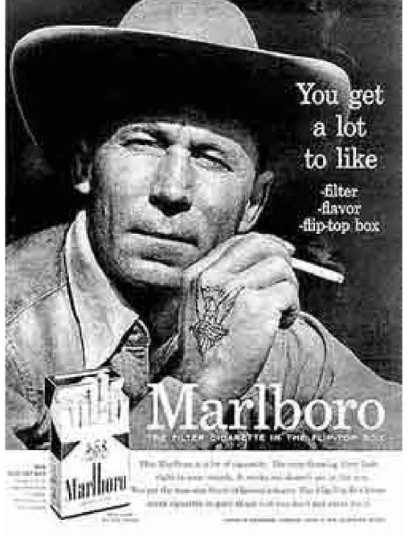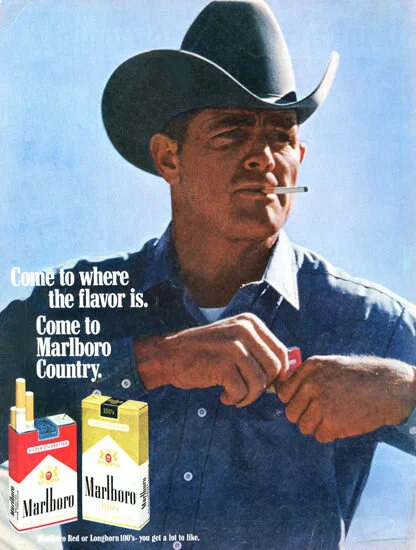
The Rise of the Marlboro Man: How Advertising Shaped a Cultural Icon
The Story Behind the “Marlboro Man” Campaign (1954)
 In 1954, Philip Morris launched the Marlboro Man campaign, which is now one of the most iconic advertising campaigns in history. Originally, Marlboro was marketed as a cigarette brand for women, with a slogan like “Mild as May.” However, facing a need to broaden its appeal, Philip Morris and the advertising agency Leo Burnett decided to rebrand Marlboro as a cigarette for rugged, masculine men. This led to the creation of the Marlboro Man, a cowboy figure representing independence, toughness, and adventure.
In 1954, Philip Morris launched the Marlboro Man campaign, which is now one of the most iconic advertising campaigns in history. Originally, Marlboro was marketed as a cigarette brand for women, with a slogan like “Mild as May.” However, facing a need to broaden its appeal, Philip Morris and the advertising agency Leo Burnett decided to rebrand Marlboro as a cigarette for rugged, masculine men. This led to the creation of the Marlboro Man, a cowboy figure representing independence, toughness, and adventure.
Transforming the Brand
The Marlboro Man campaign was initially aimed at reshaping the brand’s image to appeal to male smokers. The cowboys featured in the ads were symbolic of the American West, embodying freedom and rugged individualism, which resonated deeply with consumers. The powerful visuals, paired with the tagline “Come to where the flavor is,” were simple yet effective. This campaign not only transformed the perception of Marlboro but also changed the cigarette advertising industry.
Cultural Impact and Controversy
The Marlboro Man quickly became an American cultural icon, and Marlboro saw a significant increase in sales, becoming one of the world’s top cigarette brands. However, the campaign was not without controversy. As awareness of the health risks associated with smoking grew, the Marlboro Man became a symbol of the darker side of advertising. Several actors who portrayed the Marlboro Man later died from smoking-related illnesses, which led to public criticism of the campaign.
Legacy of the Marlboro Man

Despite its controversies, the Marlboro Man campaign remains a milestone in advertising history, demonstrating the power of imagery and storytelling in marketing. It effectively shifted consumer perceptions and reshaped the cigarette market, leaving behind a lasting legacy in both the advertising and cultural landscapes. The Marlboro Man stands as a testament to how a simple yet powerful idea can reshape a brand’s identity.
Conclusion
The Marlboro Man campaign was revolutionary for its time, turning Marlboro into a symbol of rugged masculinity and independence. Although the campaign is now criticized for promoting smoking, it remains a key example of how advertising can shape consumer behavior and cultural identity.



